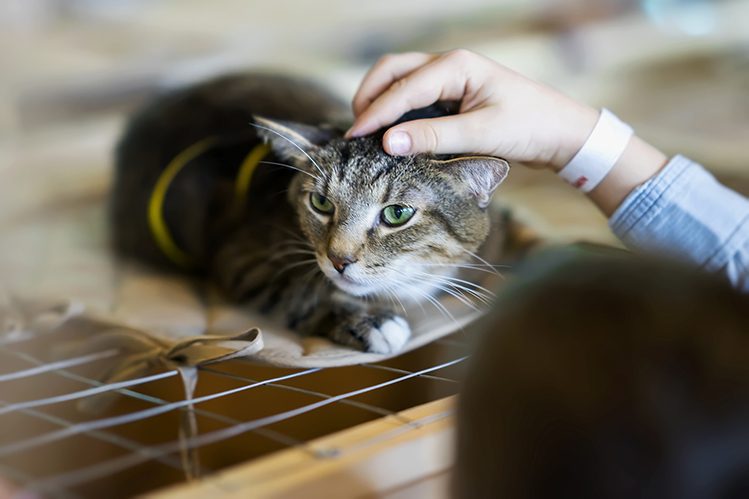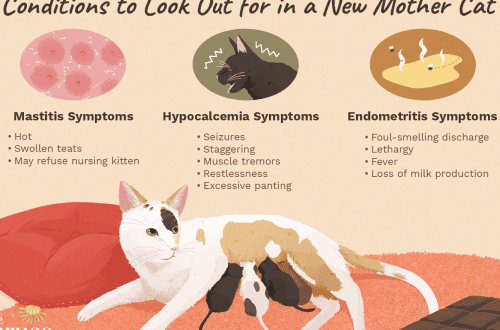
How to care for a cat from a shelter?
If you decide to adopt a cat from a shelter, then first of all you need to find out what you will need to take care of the pet. It is important to collect information about the possible difficulties of adapting a cat to a new home and find out how to help a new family member during this difficult period. We have collected recommendations for you, which will certainly be useful to the newly minted owners of the mustachioed-striped.
Choosing a four-legged friend often starts with looking at pictures on online cat shelter websites. In the shelter you can find not only outbred cats rescued from the streets, but also representatives of popular breeds, Scots or British, who are looking for a new home and caring owners. The choice of a pet must be approached with all responsibility. No matter how charming the muzzle in the photo sunk into your soul, it is important to get to know the potential pet personally and draw conclusions for yourself about its character and level of socialization.
Consider how old your cat or cat should be. Kittens from the age of two months can be taken home. In addition, for such kids, moving to a new home does not cause much anxiety, they quickly get used to new conditions. And in teenage kittens of seven to eight months, an individual character has formed, it is easier to understand whether you can get along. The older the cat or cat, the more likely it is that it is independent and accustomed to the rules of behavior at home.
What temperament would you like to see in your pet? Are you ready for a mischievous young cat to wreak havoc in your home? How contact should your ward be? Constantly expect affection and praise, play a lot with you, or do you like a more independent pet?
Visit the cat shelter several times, take a closer look at the fluffy beauties, play together. Among them, there will certainly be a cat with whom you will become close friends and no longer want to part. Your task is to establish contact and inspire confidence in your new four-legged friend. Look for information about his breed characteristics so that they do not take you by surprise. We emphasize that by the time you move in, you and your new pet should already be friends.
In shelters, pets are vaccinated and neutered or sterilized – these are the rules for keeping them. Be sure to familiarize yourself with the veterinary passport of the cat you like, the marks on the last vaccinations should be made in it no more than a year ago. Ask the volunteers for the test results of your future pet, they will be useful for the medical history. It is by no means superfluous to re-test the cat for sluggish infections, as they can be dangerous for those pets that already live in your home. Warn the shelter volunteers that you will come for this purpose together with a laboratory employee.

It is necessary to prepare in advance everything necessary for the arrival of the cat in a new home and minimize the stress and anxiety of the pet from a change of residence and an abundance of new experiences. To do this, introduce your four-legged friend to the smell of your house in advance. You can bring a blanket from the living room or a favorite blanket from a cat that already lives with you. If, upon arrival at the house, the pet smells an already familiar smell, then it will quickly get used to the environment.
Ask volunteers at the shelter in detail about the diet of your new pet, write everything down. Be prepared to feed your cat the same way for the first 10-14 days. Stock up on food or ingredients for natural feeding. The pet already has big changes ahead, so at first you need to leave the cat on its usual food. You can begin to introduce gradual changes in the diet, if necessary, two weeks after the move.
For a comfortable move, you will need a carrier. Make sure that a room is already waiting for the cat at home, in which there will be bowls for food and water, a bed, a scratching post, an open tray and a filler that the cat is used to during her life in the shelter. Toys are needed that will help the cat occupy itself, as well as toys that involve communication with the owner and feedback during the game. Cardboard boxes will play the role of a secluded cozy corner and shelter if the pet wants to be alone with his thoughts. After moving, it is better for a cat to live in a separate small room so that household members and other pets do not disturb her.
Consider security issues. Keep away all small things that a cat can accidentally swallow, and all unsafe items – sewing needles, heavy crystal vases. The wires must be hidden in special boxes. Install metal anti-cat screens with a strong frame and reliable fasteners on the windows. A mosquito net will not work, it will not provide security, a curious pet may accidentally fall out of the window with it. Anti-cat limiters are also needed; they are installed on windows with vertical ventilation.

In the first hours in a new home, a new family member receives extremely important impressions. Let the pet feel that the house is calm, quiet and comfortable, no one bothers him. Open the door of the carrier, the cat will come out on its own when it sees fit. On the first day, you do not need to wash the cat, comb it, hug it, squeeze it, let the four-legged friend recover. With walks, it is also better to wait. If on the first or second day you release a new pet for a walk, he can easily get lost. Let the mustachioed-striped sit at home for a week, then you can gradually start walking him on a leash.
On the first day in a new place, the pet needs shelter (more for psychological comfort, cardboard boxes are fine), less unrest. Four to six hours after arrival, the cat can be introduced to the household, it is better to go into the room where the new pet is located, one at a time. About 12 hours after moving in, invite your cat to play, but don’t push if she doesn’t like the idea.
For a cat from a shelter, adaptation at home, with new owners, takes place individually, much depends on her experience of communication and the level of socialization. A playful, cheerful kitten is able to get comfortable in a week. If an adult sociable cat after a month in a new home is still hiding, not trying to establish contact with the household, this is a good reason to visit a veterinarian and do a serious examination, even if the pet looks healthy. One of the possible reasons for a cat to adapt too slowly in a new home is malaise or pain.
If the pet had a negative experience in the past (abusive treatment by previous owners, aggression from other pets), adaptation may take a year or more. If you are sure that your ward is healthy, but his socialization has not moved forward for a long time, seek help from a zoopsychologist. A specialist can analyze the situation from a professional point of view and offer solutions to problems.
Living in stressful environments or with little to no human contact will also make it difficult for a cat from a shelter to adapt at home. How can you help your new pet? Play more. When a cat chases a toy with a feather or a bow on a string, she forgets all the hardships and feels how fun and good you are with you. Try not to hang over the cat, but sit and lie next to it, that is, be on the same level. Celebrate your cat’s communication progress with praise and treats.
Let’s hand treats. Try to extend the treat to the cat hiding in a secluded corner when she is hungry. Then she will have to at least partially come out of hiding and literally take a step towards you. Do not do what the cat does not like, do not squeeze and stroke a four-legged friend who is not ready for such attention.
We wish that life with a new pet will bring many joyful moments to you and your four-legged friend!





